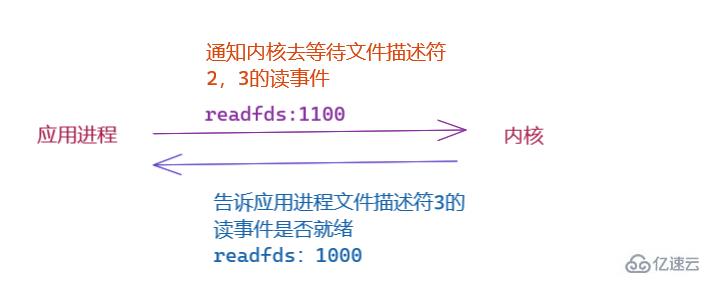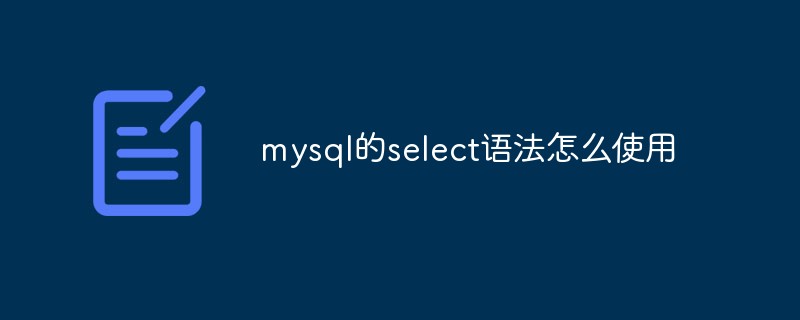 Backend Development
Backend Development Golang
Golang Implementing Select Channels through golang. The security and robustness of Go concurrent programming
Implementing Select Channels through golang. The security and robustness of Go concurrent programming
Implementing Select Channels through golang The security and robustness of Go concurrent programming
Introduction:
Go language is a programming that supports concurrent programming Language that implements concurrency through the use of goroutines and channels. In concurrent programming, channels play a very important role in coordination and communication between multiple goroutines. In the Go language, the read and write operations of multiple channels can be easily processed through the select statement, providing an elegant and efficient concurrent processing method. This article will introduce how to use golang to implement Select Channels Go concurrent programming, and focus on its safety and robustness.
1. Basics of concurrent programming:
Before we begin, we need to understand some basic concepts of concurrent programming. Concurrent programming means that there are multiple independently executed execution threads (goroutines) in the program, and these threads are executed in parallel. The concurrent programming model in Go language is based on the CSP (Communication Sequential Processes) model, which implements collaborative parallelism through goroutine and channel.
- goroutine: Goroutine is a lightweight thread in the Go language and is scheduled by the Go runtime. The function can be scheduled to be executed in a new goroutine through the keyword go.
- Channel: Channel is a communication bridge between goroutines and is used to transfer data between different goroutines. We can send data to the channel, and other goroutines can receive data from the channel. The combination of goroutine and channel makes concurrent programming simpler, more efficient and safer.
2. Select statement:
In the Go language, the select statement is used to process multiple channel operations. The select statement will block until one or more case conditions are met, and then perform the corresponding operation. If multiple case conditions are met, one case will be randomly selected for execution. The following is the basic syntax of the select statement:
select {
case <- channel1:
// 处理channel1的读取操作
case data := <- channel2:
// 处理channel2的读取操作
case channel3 <- value:
// 处理channel3的写入操作
default:
// 默认操作}
3. Select Channels Go implementation example:
Below we use an example to demonstrate how to use it The select statement implements concurrent programming.
package main
import (
"fmt" "time"
)
func worker(name string, jobs
for job := range jobs {
fmt.Println(name, "processing job", job)
time.Sleep(time.Second)
results <- job * 2
}
}
func main() {
jobs := make(chan int, 10)
results := make(chan int, 10)
// 启动3个用于处理任务的goroutine
for i := 1; i <= 3; i++ {
go worker(fmt.Sprintf("worker-%d", i), jobs, results)
}
// 向jobs通道发送任务
for i := 1; i <= 5; i++ {
jobs <- i
}
close(jobs)
// 从results通道接收处理结果
for i := 1; i <= 5; i++ {
result := <-results
fmt.Println("received result:", result)
}}
In the above example, we define a worker function that passes jobs The channel receives the task and sends the processing results to the results channel. In the main function, we create the jobs and results channels, and send tasks to the jobs channel through a loop. Then, we implemented the read and write operations on the jobs and results channels through the select statement, achieving concurrent processing and result reception. Finally, we receive the processing results from the results channel through a loop.
4. Security and robustness:
When using select statements for concurrent programming, we need to pay attention to some security and robustness issues:
- Channel Closing: In the example, we notify the goroutine that the task has been completed by closing the jobs channel. The closing of the channel is an elegant way to end the execution of a goroutine. On the receiving end, we decide whether to continue receiving data by judging whether the channel has been closed. You can use
v, ok := to receive data and determine whether the channel has been closed. - Select timeout processing: In order to avoid blocking caused by no data in a certain channel, we can use the select statement combined with the timer in the time package to set the timeout mechanism.
- Capacity of channel: The capacity of the channel will determine the number of elements that the channel can buffer. When using the select statement, we need to reasonably set the channel capacity according to business needs and system load conditions to avoid deadlock or blocking.
Summary:
By using golang's goroutine and channel to implement Select Channels Go concurrent programming, we can achieve efficient, safe and robust concurrent processing. By combining the reasonable design of channels and select statements, we can easily handle the read and write operations of multiple channels. Concurrent programming is one of the important features of the Go language. Mastering the usage of Select Channels Go is of great significance to improving program performance and user experience.
The above is the detailed content of Implementing Select Channels through golang. The security and robustness of Go concurrent programming. For more information, please follow other related articles on the PHP Chinese website!
 聊聊Golang中的几种常用基本数据类型Jun 30, 2022 am 11:34 AM
聊聊Golang中的几种常用基本数据类型Jun 30, 2022 am 11:34 AM本篇文章带大家了解一下golang 的几种常用的基本数据类型,如整型,浮点型,字符,字符串,布尔型等,并介绍了一些常用的类型转换操作。
 使用golang进行Select Channels Go并发式编程的异步处理方法Sep 28, 2023 pm 05:27 PM
使用golang进行Select Channels Go并发式编程的异步处理方法Sep 28, 2023 pm 05:27 PM使用golang进行SelectChannelsGo并发式编程的异步处理方法引言:并发式编程是现代软件开发中的一个重要领域,它可以有效地提高应用程序的性能和响应能力。在Go语言中,使用Channels和Select语句可以简单而高效地实现并发编程。本文将介绍如何使用golang进行SelectChannelsGo并发式编程的异步处理方法,并提供具体的
 jquery如何隐藏select元素Aug 15, 2023 pm 01:56 PM
jquery如何隐藏select元素Aug 15, 2023 pm 01:56 PMjquery隐藏select元素的方法:1、hide()方法,在HTML页面中引入jQuery库,可以使用不同选择器来隐藏select元素,ID选择器将selectId替换为你实际使用的select元素的ID;2、css()方法,使用ID选择器选择需要隐藏的select元素,使用css()方法将display属性设置为none,并将selectId替换为select元素的ID。
 为速度而生:PHP 与Golang 的合体 —— RoadRunnerSep 23, 2022 pm 07:40 PM
为速度而生:PHP 与Golang 的合体 —— RoadRunnerSep 23, 2022 pm 07:40 PM发现 Go 不仅允许我们创建更大的应用程序,并且能够将性能提高多达 40 倍。 有了它,我们能够扩展使用 PHP 编写的现有产品,并通过结合两种语言的优势来改进它们。
 jQuery中如何实现select元素的改变事件绑定Feb 23, 2024 pm 01:12 PM
jQuery中如何实现select元素的改变事件绑定Feb 23, 2024 pm 01:12 PMjQuery是一个流行的JavaScript库,可以用来简化DOM操作、事件处理、动画效果等。在web开发中,经常会遇到需要对select元素进行改变事件绑定的情况。本文将介绍如何使用jQuery实现对select元素改变事件的绑定,并提供具体的代码示例。首先,我们需要使用标签来创建一个包含选项的下拉菜单:
 linux要用select的原因是什么May 19, 2023 pm 03:07 PM
linux要用select的原因是什么May 19, 2023 pm 03:07 PM因为select可以使开发者在同时等待多个文件缓冲区,可减少IO等待的时间,能够提高进程的IO效率。select()函数是IO多路复用的函数,允许程序监视多个文件描述符,等待所监视的一个或者多个文件描述符变为“准备好”的状态;所谓的”准备好“状态是指:文件描述符不再是阻塞状态,可以用于某类IO操作了,包括可读,可写,发生异常三种。select是一个计算机函数,位于头文件#include。该函数用于监视文件描述符的变化情况——读写或是异常。1.select函数介绍select函数是IO多路复用的函
 mysql的select语法怎么使用Jun 01, 2023 pm 07:37 PM
mysql的select语法怎么使用Jun 01, 2023 pm 07:37 PM1、SQL语句中的关键词对大小写不敏感,SELECT等效于SELECT,FROM等效于from。2、从users表中选择所有列的,可以用符号*代替列的名称。语法--这是注释--从FEOM指定的[表中],查询出[所有的]数据.*表示[所有列]SELECT*FROM--通过从FROM从指定的[表中],查询出指定列名称(字段)的数据SELECT列名称FROM表名称实例--注意:多个列之间,使用英文的逗号来分隔selectusername,passwordfrom


Hot AI Tools

Undresser.AI Undress
AI-powered app for creating realistic nude photos

AI Clothes Remover
Online AI tool for removing clothes from photos.

Undress AI Tool
Undress images for free

Clothoff.io
AI clothes remover

AI Hentai Generator
Generate AI Hentai for free.

Hot Article

Hot Tools

Dreamweaver Mac version
Visual web development tools

MantisBT
Mantis is an easy-to-deploy web-based defect tracking tool designed to aid in product defect tracking. It requires PHP, MySQL and a web server. Check out our demo and hosting services.

Notepad++7.3.1
Easy-to-use and free code editor

SAP NetWeaver Server Adapter for Eclipse
Integrate Eclipse with SAP NetWeaver application server.

SublimeText3 Mac version
God-level code editing software (SublimeText3)






